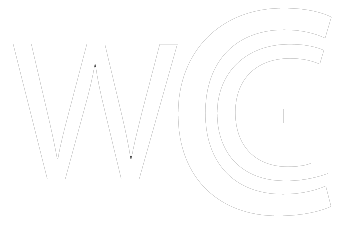Are the Medical Services Ready For Blockchain?
The medical services industry is known for being cautious and careful, so one could be pardoned for accepting that medical services and digital currency share little practically speaking. While the medical care industry requests wellbeing and hazard alleviation, digital money is based on a high-hazard, high-reward model in which a minuscule speculation can transform into a fortune and back again at the speed of an unconventional extremely rich person’s tweet.
However the foundation of cryptographic money – blockchain innovation – could before long be a vital piece of the medical care industry. Albeit most popular for its relationship with digital currency, hazily named blockchain is really an original kind of information stockpiling engineering with numerous likely applications.
Created in 2008, the innovation includes recording information in appropriated records that are copied across different PC frameworks (blocks) inside the organization (chain). The straightforwardness and overt repetitiveness in the framework give a degree of information security that recently was difficult to accomplish. It implies on the off chance that one PC framework in the blockchain is compromised, the imperfection would quickly be clear to different frameworks on the chain. Rather than permitting cybercriminals to take information in obscurity openings of the web, blockchain powers would-be information criminals to work under a spotlight.
Medical services’ reluctance
Given rising instances of ransomware assaults and rising worries about clinical security as a rule, blockchain may appear to be a boon for the medical services industry. However that potential still can’t seem to convert into a fast hug of the innovation.
Tony Little, VP of arrangements design at Prescryptive Health, an innovation organization that gives blockchain-upgraded items and administrations to the medical services and drug store enterprises, said it’s the same old thing for medical services substances to be mindful around new innovation.
“For example, it took unofficial law in 2009, as the HITECH Act, to push the business to take on the electronic clinical record by liberally offering cash to wellbeing frameworks to carry out,” he tells Managed Healthcare Executive®.
Little says probably the earliest moves have come as examinations and experimental runs programs like the Synaptic Health Alliance, which is looking to smooth out supplier registries, and the Health Utility Network, which is pointed toward further developing coordination of advantages. However such projects are restricted in scope, they include key part in the health care coverage industry, including Aetna, Anthem, UnitedHealthcare, and Humana.
Patient strengthening
Xudong Huang, Ph.D., of Harvard Medical School, accepts patients will be a major victor in the blockchain time.
“Contrasted with different sorts of information the board/security, blockchain-based frameworks can offer the two information security and information proprietorship simultaneously, in my view,” he says.
The possibility that blockchain will give patients more information possession depends on the capacity of blockchain-based frameworks to require patient approval for information recovery. In a 2019 paper, Huang and partners proposed utilizing different mark – “multisig” for short – contracts in medical services blockchains. Under a multisig approach, both the patient and his medical care supplier would have to utilize their own private keys – basically super passwords – to get to the patient’s clinical record on the blockchain. For patients, it would mean suppliers couldn’t get to their own clinical data without consent. In any case, it would likewise mean patients couldn’t modify their wellbeing records; just the suppliers could. “There have been instances of multisig contracts being utilized in the monetary field, property recording, and so on,” Huang said. “I’m not mindful of its application in the medical services field.”
To Huang, the advantages of blockchain security in medical care are about more than protection for security. As a specialist, one of his areas of interest is Alzheimer’s illness, a neurodegenerative problem for which there is no known fix. One worry inside the Alzheimer’s people group is the possible that the presence of biomarkers for the infection could be
unintentionally uncovered so that a patient may confront segregation while going after extra security or positions, among different conditions. Executing blockchain would add a huge layer of insurance, he said.
Benefits for payers
In a 2020 audit distributed in the International Journal of Medical Informatics, Alaa Abd-alrazaq, Ph.D., of Qatar’s Hamad Bin Khalifa University, and associates inspected the advantages and possible obstacles of blockchain in the medical services industry. They refered to four vital attributes of blockchain that lead to coordinate advantages for the medical services industry: changelessness, decentralization, straightforwardness and recognizability.
Permanence implies information can’t be changed without leaving advanced fingerprints, and decentralization of information makes it harder for ransomware aggressors to target medical clinics and guarantors since information would not be secured a solitary area.
Straightforwardness exists in blockchain in light of the fact that all exchanges are noticeable to anybody with admittance to the blockchain, and discernibility permits members to comprehend who is getting to data. For example, the capacity to follow information with unquestionable time stamps could assist with store network issues by permitting sellers, for example, drug organizations to more readily follow their items, they added.
Little clarifies that blockchain can likewise bring down costs. He noticed that regularly when safety net providers work with PBMs, the PBM controls specific information, apparently for the sake of security.
“In any case, this course of action leaves safety net providers requiring PBM endorsement for admittance to this information, including for reviewing or to agree with government announcing,” he says. “As a rule, PBMs will charge expenses to a back up plan to get to its own information.”
With blockchain, safety net providers can have prepared admittance to essential information without forfeiting information security. This reduces expenses as well as diminishes valuable open doors for blunder, he adds.
Settled in interests
In any case, while organizations requiring admittance to information may profit from a more open, decentralized model, that would leave organizations that blossom with such access in a losing position. Little notes that a considerable lot of the most beneficial areas of the cutting edge medical care economy are worked around procuring and putting away information and information fueled administrations.
“Involving a blockchain contradicts those conventional models, and it is difficult for officeholders to move beyond this to utilize the innovation to tackle the large issues that plague the business,” Huang says.
He says another issue is the means by which blockchain could change the job of purported enormous information in medical services or regardless of whether it will change things by any stretch of the imagination. Progressively, medical organizations and scholastic specialists have depended on the creation or securing of monstrous datasets to think of clinical bits of knowledge that would have been incomprehensible in a past time. “Siloing” information may be dangerous in numerous ways, however the actual presence of enormous datasets is important for what makes large information medical care examination conceivable.
Yet, blockchain could really help – not hurt – large information forward leaps.
“A simple answer for this is any de-distinguished patients’ information can be delivered to a public data set for simple access,” he says. As far as Huang can tell, blockchain may make it simpler to do information examination, by widening and working on access among verified substances with admittance to the blockchain on which the information are put away.
Creating impetuses
As Huang clarifies, some blockchains are totally open while others are private or in view of a consents framework that controls access. The convention behind the public blockchains, similar to those related with cryptographic forms of money, is worked to create computerized “tokens” that can be offered to assist with counterbalancing the expenses of the framework, Little says.
Nonetheless, medical care centered blockchains use frameworks with access restricted to verified elements. Prescryptive, for example, has collaborated with ConsenSys Health, which made a consent based blockchain item called Quorum Blockchain Service. Consent based blockchains are a superior fit for exceptionally significant information like clinical records, however missing an inherent income producing instrument, they should win clients in view of the potential for cost reserve funds.
Read more: http://ccxnews.com/are-the-medical-services-ready-for-blockchain/
Text source: CCx News.com










